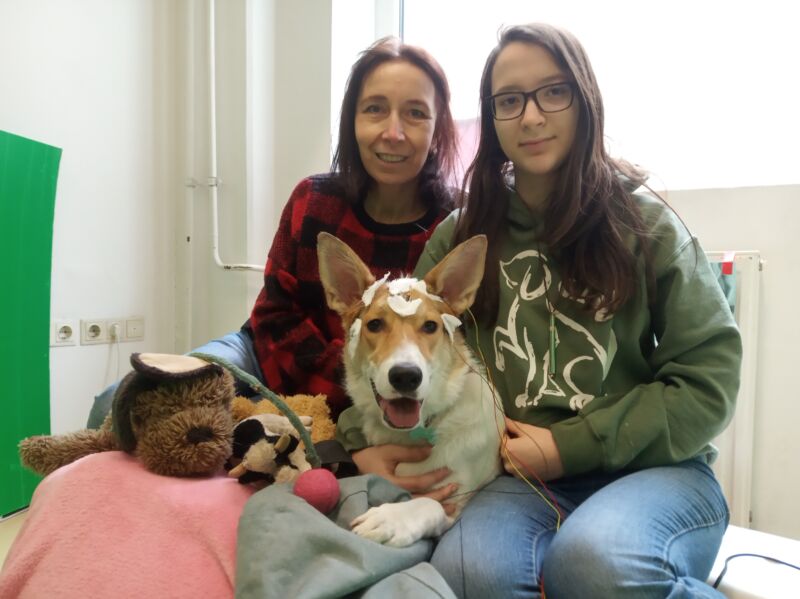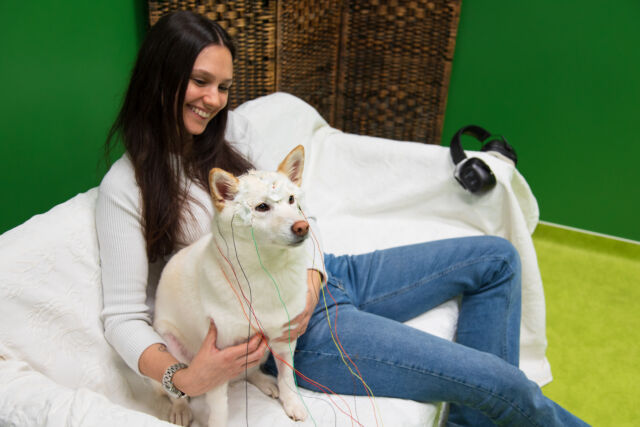
Marianna Boros, Eötvös Loránd University
Needle, a cheerful miniature schnauzer I had as a kid, turned into a ball of unspeakable noise and fury each time she saw a dog called Puma. She hated Puma so much she would go ballistic, barking and growling. Merely whispering the name “Puma” set off the same reaction, as though the sound of it and the idea of the dog it represented were clearly connected deep in Needle’s mind.
A connection between a word and a mental representation of its meaning is called “referential understanding,” and for a very long time, we believed dogs lacked this ability. Now, a study published by a team of Hungarian researchers indicates we might have been wrong.
Practice makes perfect
The idea that dogs couldn’t form associations with language in a referential manner grew out of behavioral studies in which dogs were asked to do a selective fetching task. The canines had a few objects placed in front of them (like a toy or a bone) and then had to fetch the one specifically named by their owner.
“In laboratory conditions, the dogs performed at random, fetching whatever they could grab first, even though their owners claimed they knew the names of the objects,” said Marianna Boros, a researcher at Neuroethology of Communication Lab at Eötvös Loránd University in Budapest, Hungary. “But the problem is when the dogs are not trained for the task, there are hundreds of things that can disturb them. They can be more interested in one specific toy, they may be bored, or they may not understand the task. So many distractions.”
To get around the issue of distractions, her team checked to see if the dogs could understand words passively using EEG brain monitoring. In humans, the EEG reading that is considered a telltale sign of semantic reasoning is the N400 effect.
“The work on the N400 was first published in 1981, and hundreds of studies replicated it since then with different stimuli. Typically, you show images of objects to the subject and say matching or mismatching names. When you measure EEG brain activity, you will see it looks different in match and mismatch scenarios,” explained Lilla Magyari, also a scientist at Neuroethology of Communication Lab and co-author of the study. (It’s called the N400 effect because the peak of this difference appears around 400 milliseconds after an object is presented, Magyari explained.)
The only change the team made to adapt a standard N400 test to dogs was switching the order of stimuli—the words were uttered first, and the matching or mismatching objects were shown second. “Because when they hear the word which activates mental representation of the object, they are expecting to see it. The sound made them more attentive,” said Magyari.
Timing is everything
In the experiment, the dogs started out lying on a mat with EEG gear on their heads in a room with an experimenter or the owner of a different dog. The owner of the dog being tested was separated by a glass pane with controllable opaqueness. “It was important because EEG studies [can] very precisely time the moment of presentation of your stimulus,” said Boros.

Marianna Boros, Eötvös Loránd University
Sentences spoken by the owners that would get the dogs’ attention—things like “Kun-kun, look! The ball!”—were recorded and played to each dog through a loudspeaker. Then, 2,000 milliseconds after each dog heard the sentence, the pane would turn transparent, and the owner would appear holding a matching or mismatching toy. “Each test lasted for as long as the dog was happy to participate. The moment it started to get up or look away, we just stopped the test, and the dog could leave the mat and we just finished by playing sessions. It was all super dog-friendly,” Boros said.





















+ There are no comments
Add yours